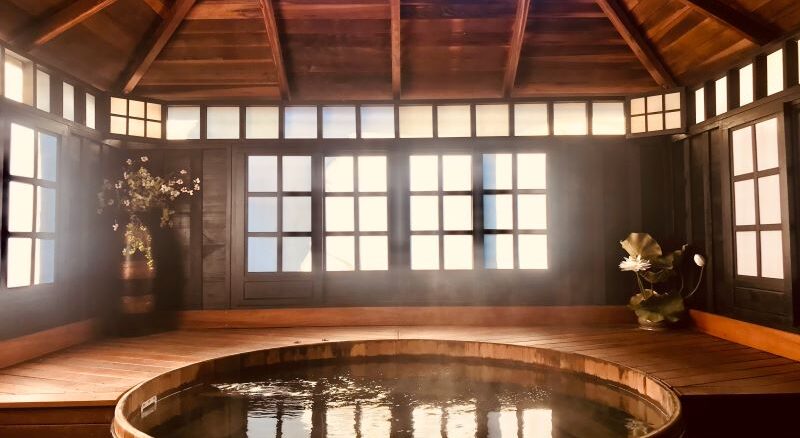Hydrotherapy, or water treatment, has a long history in European healing traditions. The basic philosophy of hydrotherapy revolves around using applications of hot and cold water to normalize blood and lymph flow, increase the quality of the blood (oxygen content, nutrient density, reduction of metabolic waste products, etc.), and induce controlled sweating. By bringing blood to and through the appropriate organs, hydrotherapy can modulate immune function, increase metabolism, strengthen digestion, boost respiration, and improve circulation. Various forms of hydrotherapy have been shown in studies to influence different systems of the body, as well as positive effects on a variety of diseases and conditions.
Many people are familiar with basic hydrotherapy practices, such as using a sauna or steam room, and ending with a cold shower. Some people enjoy contrast showers, where the shower is alternated between hot and cold, typically beginning hot and ending with a short period of cold. However, the therapies covered in this article are more specific, can have a longer duration, and are designed to be done while sleeping or to facilitate relaxation and healing. In addition, these therapies are gentle, and are particularly helpful for viral illnesses and overall sickness. The following practices are all possible to do at home and have very few contraindications. This article will focus on lung and upper respiratory infections as they are one of the most common types of viral illnesses.
Warming Socks Treatment
Indications
The Warming Socks Treatment is helpful for any type of head or upper chest congestion, as well as being a gentle way to increase overall energy, improve organ function, and stimulate the metabolism. This treatment warms and cools the feet to increase the circulation of blood and lymph; by increasing circulation to the feet, the entire peripheral circulation is stimulated. Symptoms include stuffy or runny nose, sinus congestion, heavy and congested head and headache, productive cough, chest congestion, and other cold or flu symptoms that involve the upper respiratory tract.
This is an excellent treatment for children, as it is gentle, restorative, and non-toxic. Treatment options for children are often limited, as it is generally not recommended to give over-the-counter medications to children under 6-years old.
Precautions
If you have poor sensation in your feet, take care not to burn yourself with the hot foot bath during the first part of the treatment.
You can also use lukewarm water instead of cold water for the second part of the treatment if you are very weak, or if your feet will not warm up.
| Materials | Instructions |
| 1 pair thin socks, preferably cotton or another natural plant fiber1 pair thick sock, preferably wool or a breathable fiber that does not get wet easilyPot, basin, or bucket, big enough for both your feetHot and cold water | Take the thin cotton socks and wet them in cold water, then wring them out until no longer dripping.Fill the tub or basin with hot water.Warm your feet in the hot water until your feet are very warm. If the water cools before your feet are warm, refill the tub.Dry off your feet and put the wet pair of socks on.Put the second pair of dry socks over the first pair.Leave the socks on and go to bed.In the morning the socks will be dry.This treatment is more effective when done for multiple days in a row. |
Constitutional Hydrotherapy
Indications
By boosting overall vitality, constitutional hydrotherapy can be used in almost any acute or chronic condition. It is especially useful in problems of the digestive tract, respiratory issues, infectious diseases such as colds and flus, female reproductive problems, circulatory problems, arthritis, diabetes, and others. For respiratory issues, focus the treatment on the chest and mid to upper back area.
Precautions
Take care if feeling extremely weak, if you have a very severe illness (in which case you should be in the hospital), during an acute asthma attack, during an acute bladder infection, or with diminished temperature sensation of the skin. However, the only major contraindication is if you do not feel better after the treatment. If you have a very low body temperature, or your body temperature does not increase after the treatment, perform the heating portion of the treatment for longer, until you feel very warm.
Materials
- 4 thin towels
- 1 sheet
- Blankets
- Hot and cold water
Instructions (with a helper)
- Spread the blankets on a bed or other comfortable surface, arranging them so they can be pulled over the person. Spread the sheet on top of the blankets. The person being treated should lie on their back, unclothed from the hips up.
- Wet 2 towels in hot water and wring them out thoroughly, then place them on the person’s chest and abdomen. Wrap the sheet and blankets around the person tightly to hold in the heat. Rest for 5 minutes.
- Wet 1 towel in cold water and wring out. After 5 minutes, unwrap the person, remove the hot towels, and lay the cold towels on the chest and abdomen. Cover again with the sheet and blankets.
- Rest for a minimum of 10 minutes, or until the previously cold towel is warm to the touch.
- Have the person flip onto their stomach and repeat the procedure. Begin with 5 minutes of hot towels, followed by a cold towel for 10 minutes.
Instructions (solo)
- Prepare a resting spot with blankets and a sheet, as above.
- Prepare a cold towel by wetting it with cold water and wringing it out.
- Wet 2 towels in hot water and wring them out. Wrap them around the entire torso, front and back, chest and abdomen.
- Lie down on the sheet, wrapping the sheet and blankets tightly around yourself. Rest for 5 minutes.
- Alternately, take a hot bath or shower until you feel quite warm.
- Remove the warm towels, or finish the shower or bath. Wrap the cold towel around the entire torso, then lie down, wrapping the sheet and blankets around yourself.
- Rest quietly for a minimum of 10 minutes, or until the previously cold towel has become warm.
Wet Sheet Wrap
Indications
The wet sheet wrap is a time-honored and excellent treatment, especially for acute illness, such as fevers, colds, flu, or other infectious diseases. Fever is the body’s way of fighting disease and should usually be encouraged, not suppressed. Sweating is also an important healing mechanism for resolving diseases like the cold or flu. This treatment stimulates the body and is simple to do at home by oneself, though having a second person help with the treatment can make it easier on the patient.
Contraindications and Precautions
This treatment is not appropriate for patients who are too weak to generate body heat, or have excessively high fevers. Make sure to stay hydrated, preferably with warm beverages. Seek medical attention if fever is 104℉ or above, or if the patient is delirious.
Materials
- Hot bath or shower
- One twin or single size sheet, dipped in cold water and wrung out
- 2-3 dry towels
- A comfortable place to lie down
- Blankets
Directions
- Prepare a comfortable spot. This can be the bed, the couch, or even the floor. Place a towel down to lie on and put the blankets on top, or close by.
- Prepare the wet sheet and lay it on top of the towel you have just put down.
- Take a hot shower or bath, making sure you feel very warm when you get out. Dry yourself off, taking care not to become chilled.
- Take a towel with you and lie down on the wet sheet you placed earlier, wrapping the sheet around your whole body. You will feel the cold against your skin but you should still feel warm from the shower or bath.
- Place the second towel over yourself to keep the blankets dry, and then pull the blankets up over you as well. Make sure you have enough blankets to keep you warm. It is better to have an extra blanket handy than to get cold.
- Rest quietly until you have warmed up the sheet with your body heat and have begun to sweat, which may take anywhere from 5 to 30 minutes. You may fall asleep, which is wonderful. Let yourself sweat for several minutes before finishing the treatment.
- You can now get up. After you have dried yourself off make sure to dress warmly and cover your neck and throat to prevent wind-chill. Or, go straight to bed and rest.
- Don’t do this treatment more than twice per day, as it is very stimulating and can deplete your energy if done more often.



